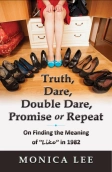For Christmas, my Beloved and I opted to gift each other with a pottery throwing class.
He had long been interested the art after creating a strange and interesting sculpture out of bronze back in the ’80s. And I’m always up for a creative challenge.
Challenge, it was. As a writer, my creativity is cerebral. But for a potter, creativity must be wrested physically from the clay. Successfully throwing pottery requires strength, dexterity and finesse.
I did not learn how to make beautiful cups and plates. As I created bowls (only the simplest bowls), I learned humility, patience and how to let go. When I let the clay speak to me, instead of insisting on dictating to it, I was more successful in my endeavors. Like so many things in life, I learned I didn’t know what I didn’t know. The medium is volatile, and any number of mishaps can occur during the process of wheel-throwing, glazing and firing. I will never gaze upon a piece of hand-thrown pottery again without appreciating all the effort that went into it.
Our class was offered for three hours in the morning once a week for six weeks at Sailing Adrift Studios in Jonestown, Texas. Our teacher, Kim Press, is an accomplished ceramicist with a gift for instruction (you can check out some of her truly amazing pieces by clicking here). My Beloved and I enjoyed the experience immensely though I think I will stick to my knitting (that is, writing). We ended up creating eight bowls each in the course of the six weeks.
In the interest of showing off and, well, let’s face it, practicing humility, here’s a look at our work.

For fun, let’s pretend my works are display at the Gallery of Minnesota Transplant (in reality, most of them might function best as holders for earrings or M&Ms, but for a few minutes, they are art). Follow me, right this way …
Monica Lee
Retrieved From Oblivion, 2022
Glazed stoneware
45/8 in x 11/2 in
On the wheel, the artist compressed the bottom so much, it disappeared. The finished work was salvaged by building a new foundation.
Monica Lee
Blue Dribbler, 2022
Glazed stoneware
43/8 in x 17/8 in
As memoirist Jhumpa Lahiri once wrote in In Other Words, “The more I feel imperfect, the more I feel alive.”
Monica Lee
Kittyhawk, 2022
Glazed stoneware
33/8 in x 11/8
Wilbur and Orville Wright’s first successful flight in 1903 south of Kitty Hawk, North Carolina, had their Wright Flyer aloft for 12 seconds, traversing less than 200 feet.
Monica Lee
Rain Kissed Blooms, 2022
Glazed stoneware
33/4 in x 21/4 in
This was the only piece the artist painted with glaze instead of dipping.
Monica Lee
Shallow Triumph, 2022
Glazed stoneware
63/4 in x 11/2 in
The artist’s final and largest work.
Monica Lee
Tea Stained Morning, 2022
Glazed stoneware
53/8 in x 13/4 in
A secondary blue haze accents this balanced finish.
Monica Lee
Secure Border, 2022
Glazed stoneware
41/8 in x 11/2 in
Monica Lee
Larger Beauty ,2022
Glazed stoneware
33/4 in x 13/4 in
Glazed to look like a bird’s egg, this piece echoes a line from Donna Tartt’s The Goldfinch: “And isn’t the whole point of things—beautiful things—is that they connect you to some larger beauty?”
I will close with this apt quote from writer Kurt Vonnegut:
To practice art,
no matter how
well or badly,
is a way to make
your soul grow.




















